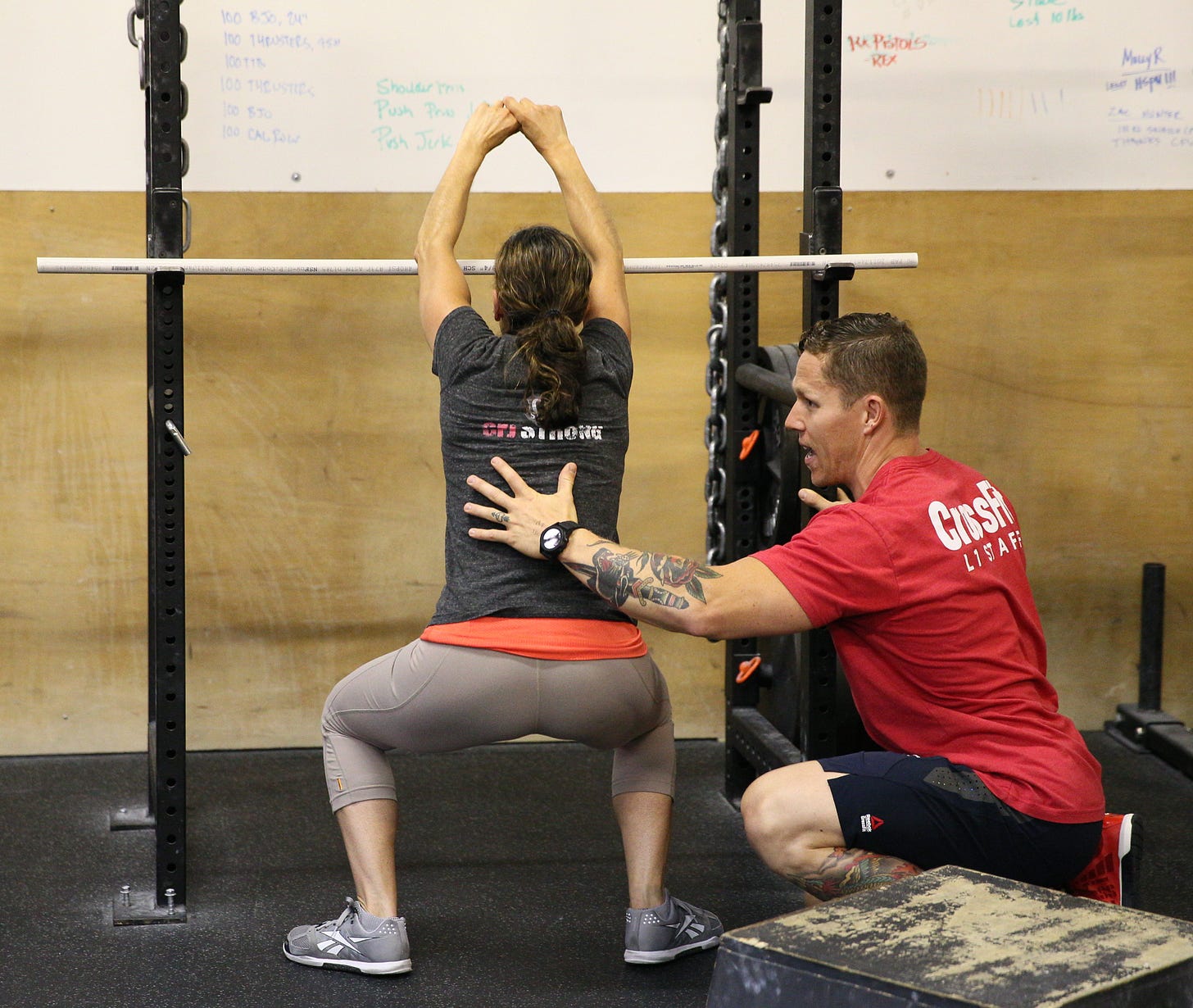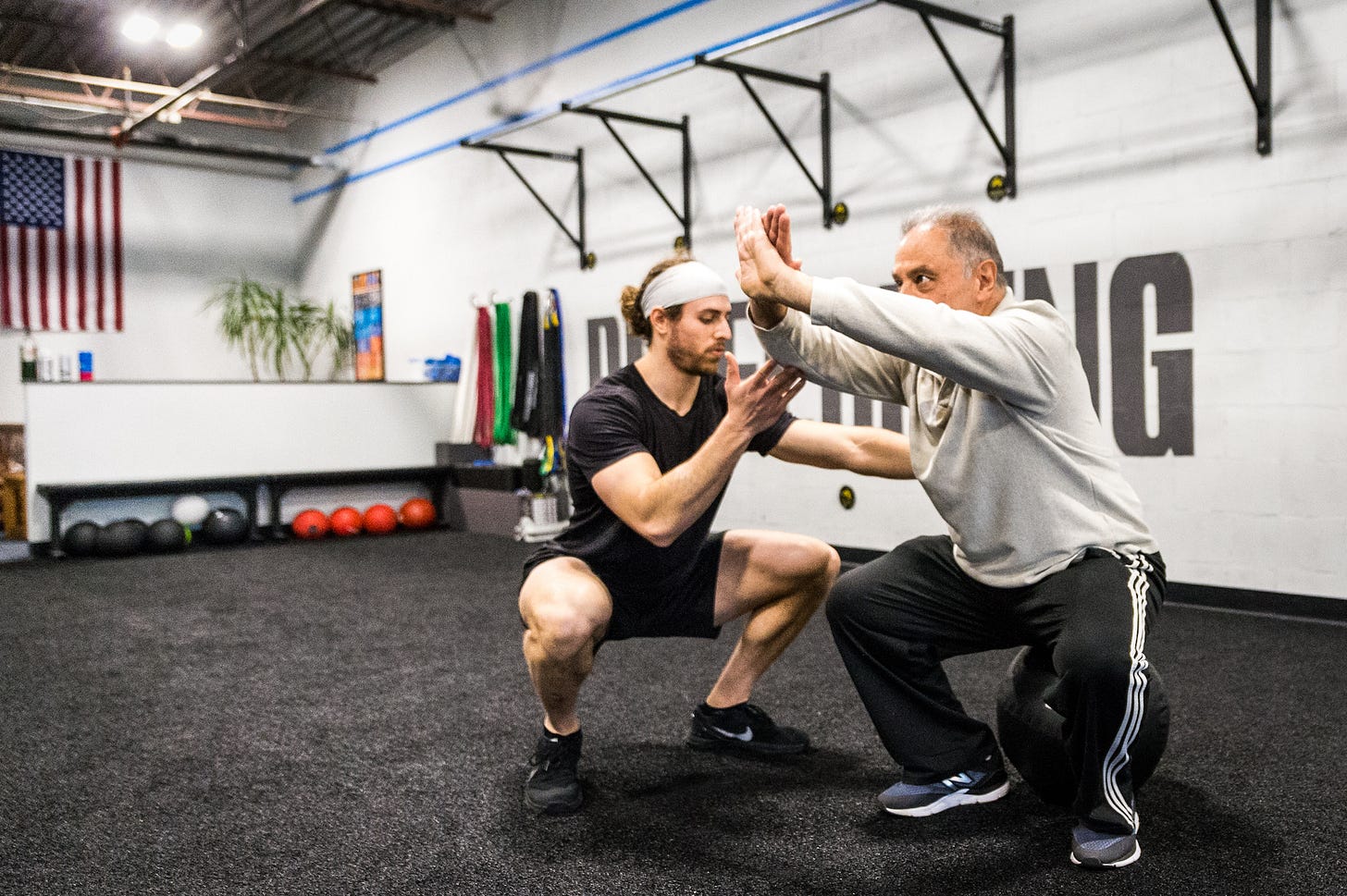Is This The Ideal Operating Model For A CrossFit Gym?
If you like selling personal training, but hate the barrier to entry, this might be for you.
And we’re back!
For some of you, this may be the first issue of WTF Weekly you’ve received.
For others, you may have been around for the thirty-or-so previous issues.
Regardless, it’s been ten weeks since I’ve infiltrated your inbox, and for that…
I’m not sorry.
Not in the least.
Why should I be?
What? Because it’s called WTF Weekly and I went ten weeks without publishing a damn thing, I should feel like a content-creating failure??
Fuck that noise.
I’m going to make the assumption that if you've subscribed, you’re a creator of some sort.
You may own a business, create products, offer services, and/or publish podcasts + videos - however you look at it, you’re probably producing something for an audience.
And guess what?
Sometimes you run out of bandwidth.
Maybe you deep dive into another project that consumes your available resources.
Or perhaps, much like that picture of Peter up above, you just don’t care to create right now.
(Gasp)
But here’s the punchline…
It’s going to be OK.
You’re not a failure. You didn’t let your audience down. Business is not going to plummet.
I want to give every one of you permission to drop the ball when it comes to content creation. And if you mentally can’t give yourself that leeway, you’re in for a real shitty career.
Because creating content to create influence and grow your business is probably not going anyway, anytime soon. Content creation is an insatiable whore that you’ll never satisfy.
There’s always a new video or post that needs to be made to push your latest idea.
Your competition always seems to be nipping at your heels with their information output and you’ll constantly try to be one Instagram Reel ahead of them.
This media burden will always be there. So, relax and realize it’s OK to take some time off, focus on other forms of communication or completely back away to realign your messaging and clear your head.
I didn’t lose an ounce of sleep during my writing hiatus and in fact, I even hit record revenue months during this newsletter “blackout” period.
Go figure. 🤷♂️
xoxo
Stu
The PT Second Model For CrossFit Gyms
or any other microgym with a complex fitness methodology…
Since 2015, I’ve been advocating for CrossFit affiliates to consider an operating model, which I referred to as PT First.
At its core, new members would be required to participate in a series of personal training sessions and perform a “test out” before being admitted into the group class.
To me, this wasn’t exactly earth-shattering information. It simply made sense that if you wanted to participate in the world’s most complex fitness program, it might be smart to have some private training sessions first.
And I wasn’t alone. Forward-thinking organizations like Madlab and Active Life had been preaching the same concept.
But the beauty of what I do with WTF lies in the fact that I don’t sell a singular system or have dogmatic beliefs about a certain operating model. I’m a business guy who likes to educate his audience on the various options for running a business in the fitness industry - and I let them choose which is best for them.
Unless you hire me, then I’m going to sure as hell tell you which model you should be running.
And while I personally utilized PT First for my own and others’ CrossFit-style microgyms, I later installed and taught the Straight To Class model.
STC is the antithesis of the former operating model, allowing a new member to get straight to group classes due to the less-complex nature of their fitness program.
I’m not going to get into the weeds regarding the pros vs. cons of these two - I already did that here - catch up if needed.
Enter PT Second
And for years, these two operating models were the only variations within the microgym/boutique industry.
But as I accumulated my 10,000 hours of consulting in the microgym industry, my clients were often at a crossroads with which model to use as their operating system.
PT First was great for retention, income for coaches, additional revenue for the business, and produced a premium service.
STC was far easier to market, allowed for high volume sales, and didn’t have the barrier to entry of expensive personal training packages.
Many owners tried a hybrid of the two, allowing some to go STC, while others had to pay for PT First.
It was inconsistent and messy.
So I went to work and started engineering the PT Second model.
The goal was simple: Create an easy-to-market, high-volume service for a low-to-high complexity fitness model, that allowed members who desired to learn the more advanced stuff the opportunity to do so by purchasing personal training (tentatively called Advanced Movement Sessions).
And I fucking nailed it.
Don’t believe me?
Look at my fancy af Venn diagram.
How It Works
Effectively, your microgym would operate as an STC model.
You would adopt a lower complexity “movement pattern based” programming style (more on this in a moment) and run offers that allowed prospective members to jump right into class and try it out.
Prospects are reassured that every class is composed of effective, yet simple movements that will be taught to them by the group class coach.
They are then warned, “And please don’t worry if you see other members performing more advanced movements alongside you. You’ll have the option to learn those when you feel ready by working with one of our coaches in a one-on-one setting.”
Once sold a membership, you allow the new member to get their feet wet, enjoy their new fitness pursuit and excel at the basic movements that are reviewed in class.
Eventually, they may feel confident enough in their new fitness level and desire to challenge themselves further.
They’ve heard coaches talk about Advanced Movement Sessions (AMS) and read about them in the weekly emails - and now they’re intrigued.
You talk with the member about their goals and what movements they would like to scale up. After a purposeful conversation, you sell them X amount of AMS and they “test out” of their initial movements and graduate to more complicated movements.
This journey can continue almost indefinitely for some and may never be approached by others. And that’s the whole point.
Instead of you telling a client what movements they must learn first (a la PT First), you let them feel out of your program and determine for themselves which movement patterns they want to advance within.
Imagine that. The client gets to choose their own journey. Not the microgym. #fuckingcrazy
But there’s a catch…
PT Second is going to require a change to your programming.
Currently, most microgyms program workouts based on movements and prescribe the load based on gender (how un-woke of you). It typically looks like this:
5 Rounds For Time
15 Deadlifts (155# M/135# W)
10 Pullups
5 Burpee Box Jumps (30” M/ 24” W)
200m Run
In this example, they determined which movements the individual was going to perform. Those who can’t perform the movement safely will be scaled to something else.
But what if you programmed around movement patterns? Allowing the members to reach into their pre-determined toolbox of movements and select the one they want?
It may look something like this.
Move continuously for 30 minutes:
15 Hip Hinge (choose a movement and load that allows you to perform ~8 reps for strength or all 15 reps for conditioning)
10 Vertical Pull (choose a movement that allows for a 3-second tempo at the top of each rep)
:30 Bodyweight Conditioning (choose a movement that allows you to work without stopping for the entire thirty seconds)
2:00 Cardio (choose an erg or opt to run outdoors for the prescribed amount of time)
I know what you’re thinking.
“But how is the member supposed to know what movements they have been approved to perform? How are we supposed to regulate this consistently?’
And it’s a great question….
That is answered (along with everything else you could ask about PT Second) inside of Microgym University in a series of new courses dropping very soon.
But you get the gist.
Because you are now programming around movement patterns, you can create tiers of movements.
Members can now opt to pay for AMS in order to climb those tiers, grow proficient at them, and become “approved” to use them in the group setting.
Think of it in terms of how the karate belt system works or the Level Method, just with its own unique style that each microgym can customize to fit its needs.

Criticism requested
As with any new thesis that I publish, I anticipate and hope for criticism from my colleagues - both positive and negative.
So please, if you have thoughts on the PT Second model, I’d love to hear them.
You can reply to this email or shoot me a DM on Instagram. I’d love to chop it up with you.
Damn it feels good to be back.
Don’t get too excited though, next week’s email might not happen.
Or maybe it will.
#staytuned











My dream for a long time was to a create a Physical Therapy centered gym, where each class in the gym had a pre/rehabilitative focus and was “prescribed” to the athletes of the gym! A never ending cycle of health and longevity!